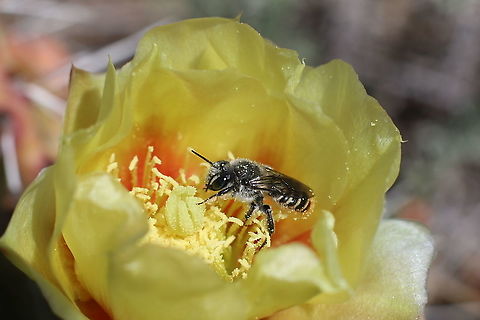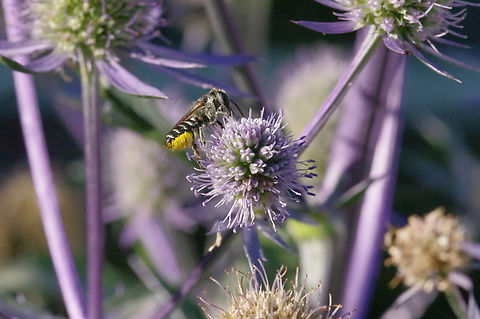
Distribution
In North America, the species was deliberately imported to assist in the pollination of food crops, but has now become feral and widespread. In New Zealand and Australia, it was also introduced to assist in the pollination of alfalfa , in 1971 in New Zealand, and 1987 in Australia.
Reproduction
Female alfalfa leafcutter bees have stingers, but both sexes will use their mandibles as a defensive mechanism, usually only defending themselves when squeezed or antagonized. Therefore, bee suits, such as those required with honey bees, are not necessary when dealing with these bees. The ratio of males to females is generally two to one.Females in the wild create nests in small holes in the ground or in available cracks/crevices in trees or buildings. The nests are composed of a string of individual cells, as many as the space will allow. When managed for pollination, the females are induced to nest in drinking straws or drilled blocks of wood.
Each cell is made from circular disks cut from plant leaves using the bee's mandibles, hence the name "leafcutter". While the bees do not store honey, females do collect pollen and nectar which they store in the cells of their nests. Each cell contains one pollen and nectar ball and one egg. The larva develops rapidly, consuming the pollen ball and entering diapause when the pollen is fully consumed. The next spring, the mature larva pupates and completes its development. Once the bee is developed, it cuts its way out from the nest.
References:
Some text fragments are auto parsed from Wikipedia.